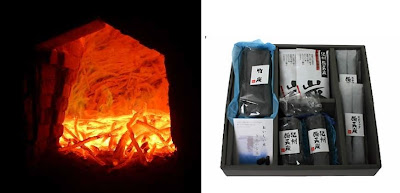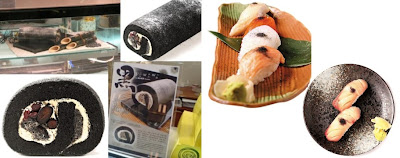
In the early 1930 the tearoom and pastry-shop Ladurée in Paris started selling the new creation of Pierre Desfontaines, grandson of Louis Ernest Ladurée: two traditional dome halves sandwiched with a sweet filling between: the ganache. This resulted in giving the new macaron a larger size, the possibility of flavored garnishes, and a newfound moistness that came from the garnish. Whereas the traditional macaron was sweet and dry and crunchy, the new macaron had the added attraction of being delicately crunchy on the outside, while moist, chewy, and flavourful on the inside.

Apart from the most well known Paris pâtisseries Pierre Hermé and Ladurée for their French macaron creations, it was the jewels at L'Atelier de Joël Robuchon in Hong Kong, that turned my love into a devotion. Unlike the macarons at Pierre Hermé and Ladurée that come in grandes variétés of seasonal flavours, and are not shy to display their vibrant characters, there are only 8 flavours featured at L'Atelier de Joël Robuchon, each with a soft pastel colour that complements the delicate texture of this prized French pâtisserie. The sweetness was much milder than those I savoured in Paris, allowing each of the signature flavours plus the backnote of almond to trigger a more complete and intense chemoreception.

My affair with L'Atelier de Joël Robuchon was not meant to end with just their macarons, when my gaze was redirected towards a pâtisserie featuring no other teas but The Earl Grey....I was sold simply from its stunning presentation - en forme de dôme de mousse gently kissed by a thin dust of sprayed chocolat blanc. It was unimaginable that its taste could be more phenomenal....it was the perfect representation of the marriage between Earl Grey and citron, and tasting it on the rocking Star Ferry ride between Central and TST just gave the extra edge. The flavourful mousse was expertly formed to create a fluid mouth feel, and to heighten the textual experience, the skillful chef added petites pastilles de chocolat croustillant.

Leaving this treasure chest with une boîte de macaron, I knew it was enough to bring forth the jealousy from my strange companion on a dreadfully long flight.

















 One of the notable pâtisseries from my southern Hokkaido trip....and being situated in Otaru 小樽, the history and hospitality of the location only made Kitakaro that much more memorable. This gem hides within a gray stone complex, and if it wasn't for the honey floral aroma that disbursed from within, I would have mistaken it for a historical Japanese bathhouse, grand but eccentric....
One of the notable pâtisseries from my southern Hokkaido trip....and being situated in Otaru 小樽, the history and hospitality of the location only made Kitakaro that much more memorable. This gem hides within a gray stone complex, and if it wasn't for the honey floral aroma that disbursed from within, I would have mistaken it for a historical Japanese bathhouse, grand but eccentric....




